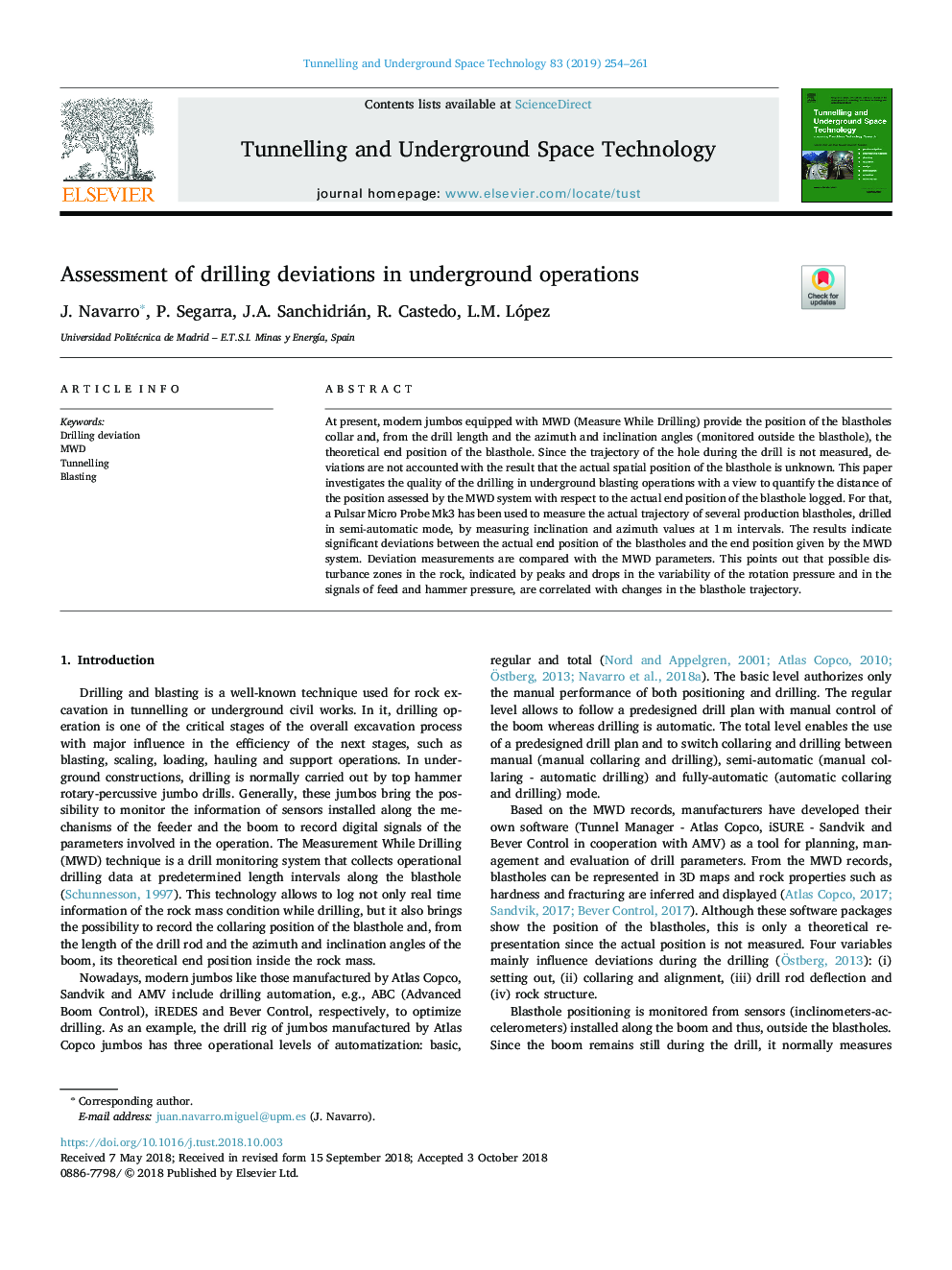| Article ID | Journal | Published Year | Pages | File Type |
|---|---|---|---|---|
| 11263441 | Tunnelling and Underground Space Technology | 2019 | 8 Pages |
Abstract
At present, modern jumbos equipped with MWD (Measure While Drilling) provide the position of the blastholes collar and, from the drill length and the azimuth and inclination angles (monitored outside the blasthole), the theoretical end position of the blasthole. Since the trajectory of the hole during the drill is not measured, deviations are not accounted with the result that the actual spatial position of the blasthole is unknown. This paper investigates the quality of the drilling in underground blasting operations with a view to quantify the distance of the position assessed by the MWD system with respect to the actual end position of the blasthole logged. For that, a Pulsar Micro Probe Mk3 has been used to measure the actual trajectory of several production blastholes, drilled in semi-automatic mode, by measuring inclination and azimuth values at 1â¯m intervals. The results indicate significant deviations between the actual end position of the blastholes and the end position given by the MWD system. Deviation measurements are compared with the MWD parameters. This points out that possible disturbance zones in the rock, indicated by peaks and drops in the variability of the rotation pressure and in the signals of feed and hammer pressure, are correlated with changes in the blasthole trajectory.
Keywords
Related Topics
Physical Sciences and Engineering
Earth and Planetary Sciences
Geotechnical Engineering and Engineering Geology
Authors
J. Navarro, P. Segarra, J.A. Sanchidrián, R. Castedo, L.M. López,
